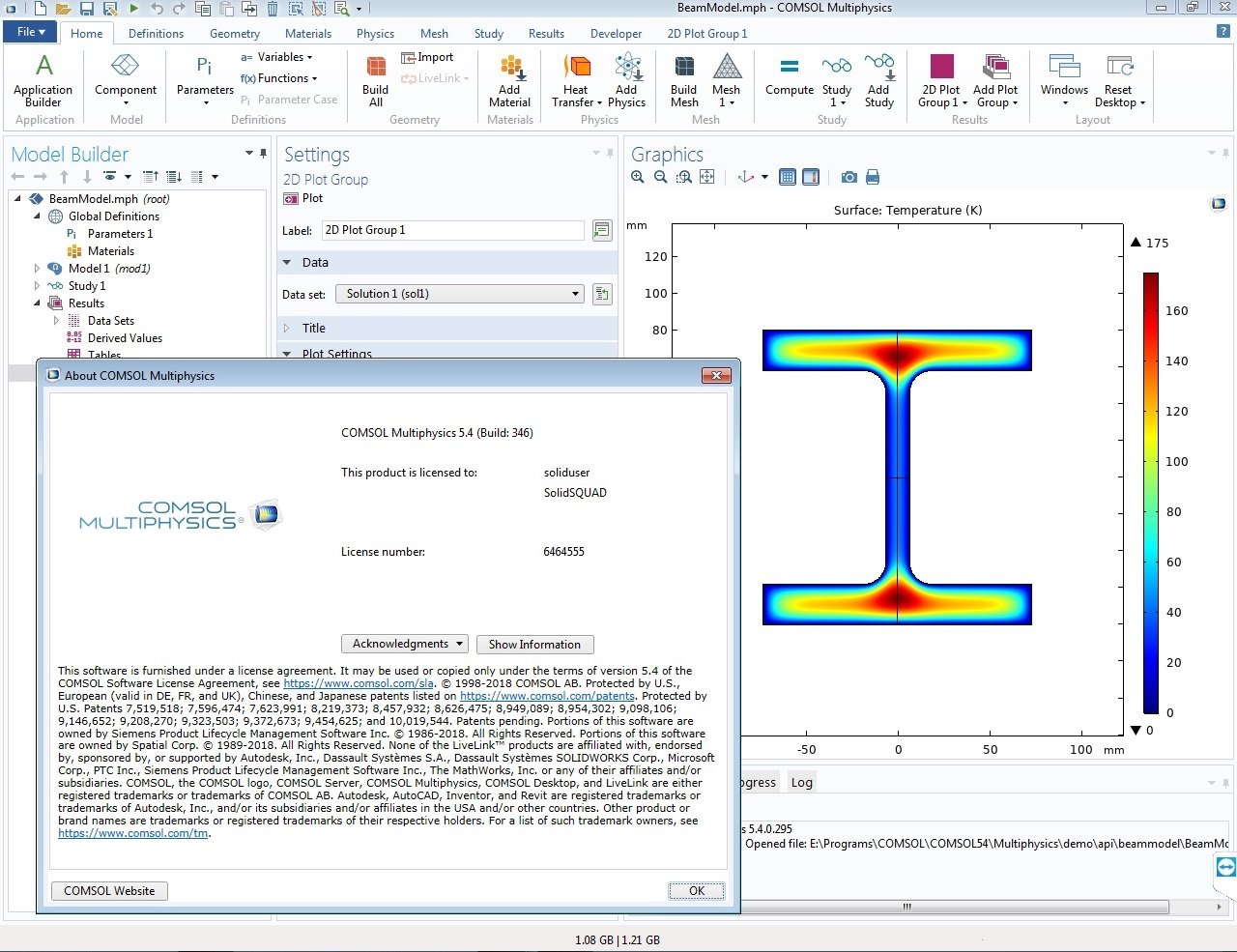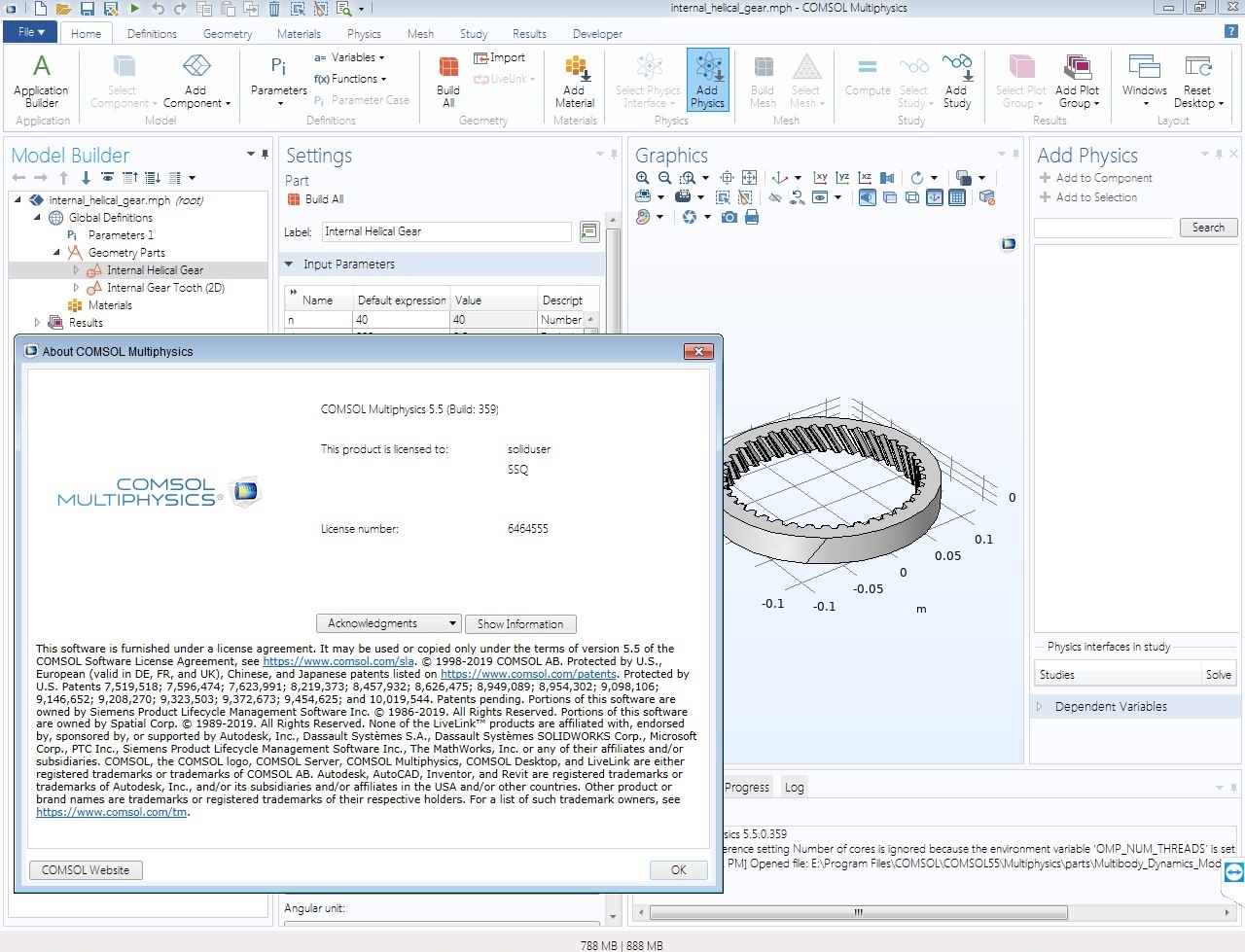
- Comsol multiphysics programming reference manual how to#
- Comsol multiphysics programming reference manual mac os x#
- Comsol multiphysics programming reference manual software#
- Comsol multiphysics programming reference manual code#
- Comsol multiphysics programming reference manual series#
Comsol multiphysics programming reference manual code#
To overcome this limitation, we implemented Mazars’ damage model in an external material function, adding the C code for inspection and modification. How so? It requires memorizing previous steps and conditional manipulation of variables based on principal stresses and principal strains. The inception and evolution of the damage variable is quite tricky to compute with standard variables in COMSOL Multiphysics. The material, which behaves as a linear-elastic solid, is undamaged when the damage variable equals zero and fully damaged as the variable approaches one. Here, \sigma is the stress tensor, C is the elasticity matrix, and \epsilon is the strain tensor. The variable enters the constitutive stress-strain relationship as Mazars’ model for concrete damage characterizes the fracture behavior within concrete using an isotropic scalar damage variable d. The damage variable controls the weakening of the material’s stiffness. In the continuum damage mechanics formalism, a “damage” variable represents the amount of deterioration due to crack growth. The occurrence and growth of the cracks play an important role in the failure of concrete structures, and there are a number of theories used to describe such behavior. However, if a critical stress or strain level is exceeded, a nonlinear fracture phase will follow the elastic phase.Īs the critical value is reached, cracks will begin to grow and spread until the material fractures. Upon unloading, the material will return back to its original state. The deformation of brittle materials under mechanical loads is characterized by an initial elastic deformation.

Using Mazars’ Damage Model for a Concrete Analysis Let’s take a closer look at the latter of these two examples.
Comsol multiphysics programming reference manual how to#
The second, and more realistic, case shows how to implement a nonlinear material model that computes damage in concrete.

In the first case, we explain how to write the C code for an isotropic linear elastic material and compare our results to the built-in Linear Elastic Material for a simple uniaxial test.
Comsol multiphysics programming reference manual mac os x#
(Running the models on Linux® operating systems and Mac OS X requires additional compilation and linking.) The examples include a model file, a source C file, and a shared dynamic-link library (DLL) compiled and linked for a 64-bit Windows® operating system.
Comsol multiphysics programming reference manual series#
To show you how the functionality works, we have added a tutorial to our Application Gallery that features a series of relevant demonstrations. Putting the Added Functionality into Practice You can even create easy-to-use apps, by using the Application Builder and incorporating your external material functions, and distribute these to your colleagues and customers as well. If you write a wrapper function in C code, material functions can also be written in other programming languages, making it easy for you to reuse your legacy code.Īlong with programming your own material models, distributing your models to colleagues and customers as add-ons is now an option as well. With the added capabilities, implementing external material functions coded in the C programming language is possible.

The External Material, External Strain, and External Stress-Strain Relation nodes in the model tree. Two new features in the Solid Mechanics interface complement this functionality: the External Strain subnode under the Linear Elastic Material node and the External Stress-Strain Relation material model. In structural mechanics analyses, you are now able to completely define a nonlinear stress-strain relationship, or include an inelastic strain contribution with an existing elastic material. The latest version of COMSOL Multiphysics - version 5.2 - features a new way for you to specify user-defined material models. But what if your material model includes nonlinear expressions that are impossible to express in terms of standard variables, invariants, or additional PDEs? Extra PDEs or distributed ODEs can also extend a given material law. Material models for plasticity, viscoelasticity, creep, and hyperelasticity are just some of those that are available.īy using the built-in constitutive laws as a starting point, you have the ability to create your own material models based on stress or strain invariants, flow rules, or creep laws directly in the user interface. In COMSOL Multiphysics, you can access a variety of predefined materials to model mechanical deformation in solids. We demonstrate how the new functionality works with the example of implementing Mazars’ model to describe damage to concrete.Ī New Method for Specifying User-Defined Material Models
Comsol multiphysics programming reference manual software#
COMSOL Multiphysics® software version 5.2 enables you to access material models derived from external libraries as well as material functions programmed by yourself.

In structural mechanics, you may want to specify user-defined material models in your simulation.


 0 kommentar(er)
0 kommentar(er)
